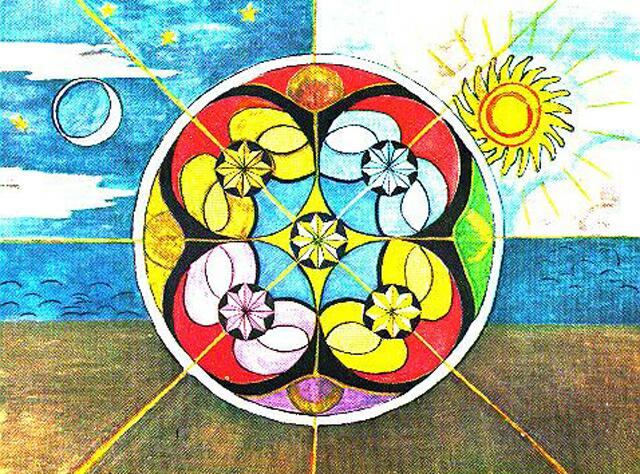03.08.2010

Mandala is a graphical representation of the center (the Self for Jung). It can appear in dreams and visions or it can be spontaneously created as a work of art. It is present in the cultural and religious representations.
Examples of mandala can be found in all the ancient cultures. We find it in Christianity under the form of frescos with animal images representing apostles (and the zodiac). The astrologic zodiac and its versions are examples of mandala. Also, in the Indian spiritual practices we find fascinating examples of mandala, with symbols of the local pantheon.
In the yoga practices mandala can be a support for meditation or an image that must be internalized through mental absorption. This image organizes the inner energies and forces of the practitioner and puts them in relationship with his ego.
Generally speaking a mandala is a geometrical form – a square or a circle – abstract and static, or a vivid image formed of objects and/or beings.
In our dreams the mandala indicates the phenomenon of centering the individual psychic in which the ego reconsiders its (dominant) position through the assimilation of the collective unconscious contents (symbols or archetypal images).
In modern dreams mandala can be a sophisticated electronic device – an electronic watch or a sophisticated circular machinery. Often the UFOs seen on the sky are also mandala symbols.
Other mandala images can be circular fountains, parks and their radial alleys, square market places, obelisks, buildings with a circular or square shape, lakes, rivers (radial water networks).
In the Jungian therapy, which includes the living experience of the collective unconscious contents, the spontaneous drawing of mandalas is used. There are a lot of illustrations that testify this technique practiced by Jung himself.
Source: www.carl-jung.net




